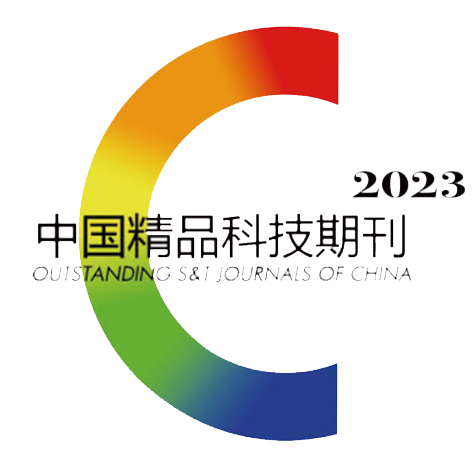| [1] |
Barclay T G, Day C M, Petrovsky N, et al. Review of polysaccharide particle-based functional drug delivery[J]. Carbohydrate Polymers,2019,221:94−112. doi: 10.1016/j.carbpol.2019.05.067
|
| [2] |
Campo V L, Kawano D F, Silva D B D, et al. Carrageenans: Biological properties, chemical modifications and structural analysis - A review[J]. Carbohydrate Polymers,2009,77(2):167−180. doi: 10.1016/j.carbpol.2009.01.020
|
| [3] |
Evingür G A, Pekcan Ö. Elasticity study of PAAm-κC composite prepared in various κC content and Measured at Several Temperatures[J]. Acta Physica Polonica A,2015,128(2):331−336. doi: 10.12693/APhysPolA.128.331
|
| [4] |
Chen H M, Yan X J, Wang F, et al. Assessment of the oxidative cellular toxicity of a κ-carrageenan oxidative degradation product towards Caco-2 cells[J]. Food Research International,2010,43(10):2390−2401. doi: 10.1016/j.foodres.2010.09.019
|
| [5] |
Chen J, Chen W, Duan F, et al. The synergistic gelation of okra polysaccharides with kappa-carrageenan and its influence on gel rheology, texture behaviour and microstructures[J]. Food Hydrocolloids,2019,87:425−435. doi: 10.1016/j.foodhyd.2018.08.003
|
| [6] |
Liu Z , Bhandari B , Prakash S , et al. Linking rheology and printability of a multicomponent gel system of carrageenan-xanthan-starch in extrusion based additive manufacturing[J]. Food Hydrocolloids,2019,.87:413−424. doi: 10.1016/j.foodhyd.2018.08.026
|
| [7] |
Li X, Xie Q, Zhu J, et al. Chitosan hydrochloride/ carboxymethyl starch complex nanogels as novel Pickering stabilizers: Physical stability and rheological properties[J]. Food Hydrocolloids,2019,93:215−225. doi: 10.1016/j.foodhyd.2019.02.021
|
| [8] |
Lascombes C, Agoda-Tandjawa G, Boulenguer P, et al. Starch-carrageenan interactions in aqueous media:Role of each polysaccharide chemical and macromolecular characteristics[J]. Food Hydrocolloids,2017,66:176−189. doi: 10.1016/j.foodhyd.2016.11.025
|
| [9] |
Loret C, Ribelles P, Lundin L. Mechanical properties of κ-carrageenan in high concentration of sugar solutions[J]. Food Hydrocolloids,2009,23(3):823−832. doi: 10.1016/j.foodhyd.2008.04.012
|
| [10] |
Yang Z, Yang H, Yang H. Effects of sucrose addition on the rheology and microstructure of κ-carrageenan gel[J]. Food Hydrocolloids,2018,75:164−173. doi: 10.1016/j.foodhyd.2017.08.032
|
| [11] |
Yuan C, Sang L, Wang Y, et al. Influence of cyclodextrins on the gel properties of kappa-carrageenan[J]. Food Chemistry,2018,266:545−550. doi: 10.1016/j.foodchem.2018.06.060
|
| [12] |
Sugimoto T, Horaguchi K, Shoji H. Indigestible dextrin stimulates glucoamylase production in submerged culture of Aspergillus kawachii[J]. Journal of Industrial Microbiology & Biotechnology,2011,38(12):1985−1991.
|
| [13] |
Nagata J, Saito M. Effects of simultaneous intakes of indigestible dextrin and diacylglycerol on lipid profiles in rats fed cholesterol diets[J]. Nutrition,2006,22(4):395−400. doi: 10.1016/j.nut.2005.08.008
|
| [14] |
苏会波, 林海龙. 难消化糊精的研究进展[J]. 食品与生物技术学报,2014,33(1):1−7.
|
| [15] |
|
| [16] |
Yuan C, Du L, Zhang G, et al. Influence of cyclodextrins on texture behavior and freeze-thaw stability of kappa-carrageenan gel[J]. Food Chemistry,2016,210:600−605. doi: 10.1016/j.foodchem.2016.05.014
|
| [17] |
黄政. 水溶性抗性糊精的性质及其对面粉加工品质的影响[D]. 广州: 华南理工大学, 2019.
|
| [18] |
李亚楠, 曲敏, 田野, 等. 胡萝卜冰结构蛋白的诱导及对淀粉凝胶冻融稳定性的影响[J]. 食品工业科技,2020,41(7):70−75, 81.
|
| [19] |
桑璐媛. 环糊精对κ-卡拉胶凝胶特性的影响及其应用研究[D]. 郑州: 河南工业大学, 2017.
|
| [20] |
|
| [21] |
Qi X, Wei W, Su T, et al. Fabrication of a new polysaccharide-based adsorbent for water purification[J]. Carbohydrate Polymers,2018,195:368−377. doi: 10.1016/j.carbpol.2018.04.112
|
| [22] |
Pettinelli N, Rodríguez-Llamazares S, Abella V, et al. Entrapment of chitosan, pectin or κ-carrageenan within methacrylate based hydrogels: Effect on swelling and mechanical properties[J]. Materials Science and Engineering: C,2019,96:583−590. doi: 10.1016/j.msec.2018.11.071
|
| [23] |
Wang Y, Yuan C, Liu Y, et al. The influence of a hydroxypropyl-beta-cyclodextrin composite on the gelation of kappa-carrageenan[J]. Food Hydrocolloids,2019,90:276−284. doi: 10.1016/j.foodhyd.2018.12.037
|
| [24] |
陈永, 李玲, 洪玉珍, 等. 椰壳纤维的热解动力学分析[J]. 材料导报,2011,25(2):107−111.
|
| [25] |
Zhao L, Zheng Q, Liu Y, et al. Enhanced strength and toughness of κ-carrageenan/polyacrylic acid physical double-network hydrogels by dual cross-linking of the first network[J]. European Polymer Journal,2020,124:109474. doi: 10.1016/j.eurpolymj.2020.109474
|
| [26] |
刘国军, 盛龙, 童群义. 普鲁兰多糖对κ-卡拉胶凝胶特性及流变学性质的影响[J]. 食品工业科技,2014,35(4):148−152.
|
| [27] |
Şen M, Erboz E N. Determination of critical gelation conditions of κ-carrageenan by viscosimetric and FT-IR analyses[J]. Food Research International,2010,43(5):1361−1364. doi: 10.1016/j.foodres.2010.03.021
|
| [28] |
Stenner R, Matubayasi N, Shimizu S. Gelation of carrageenan: effects of sugars and polyols[J]. Food Hydrocolloids,2016,54:284−292. doi: 10.1016/j.foodhyd.2015.10.007
|











 DownLoad:
DownLoad: